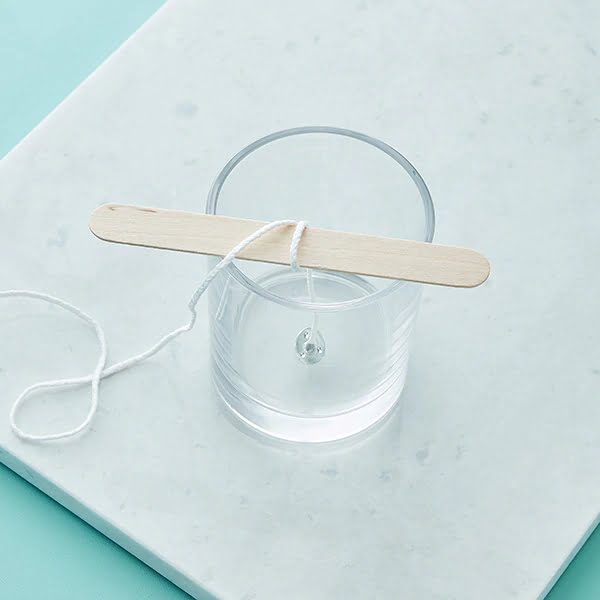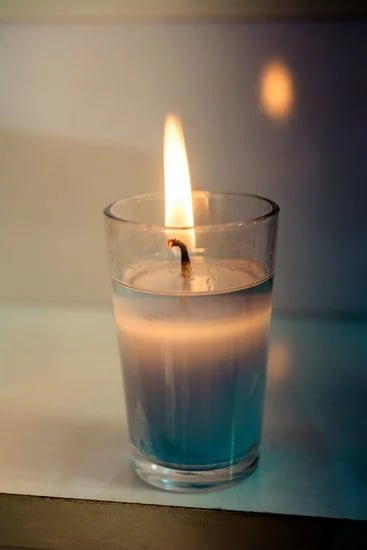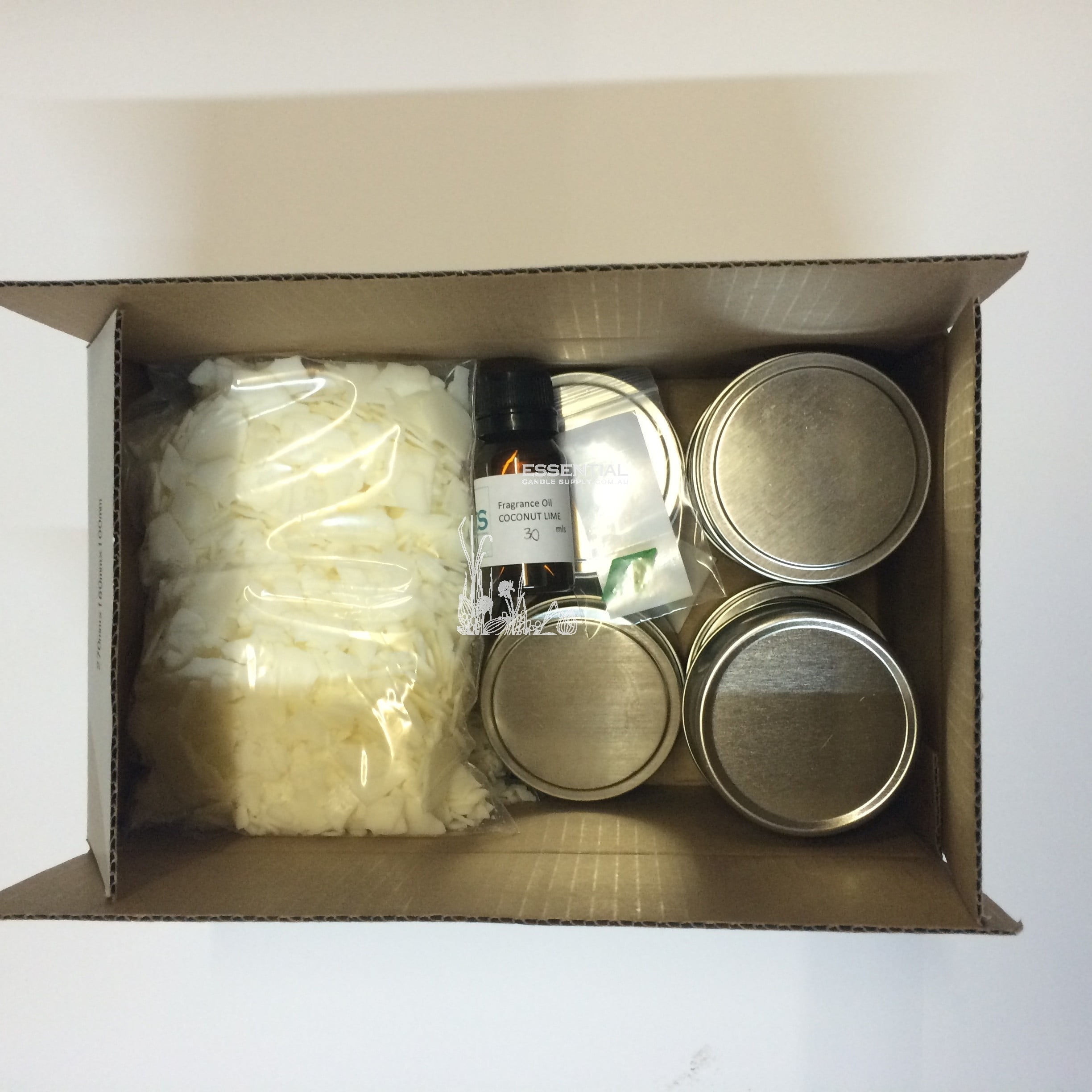Melting wax is the essential first step in the intricate process of candle making. It is both an art and a science, requiring careful consideration and precise execution. In this article, we will explore the fascinating world of melting wax for candle making, uncovering the different types of wax available, discussing the factors to consider when selecting the perfect wax, and providing a step-by-step guide on how to transform solid chunks of wax into beautiful liquid gold.
Candle making has been practiced for centuries, with its origins dating back to ancient civilizations. While advancements in technology have introduced innovative techniques and materials, melting wax remains a fundamental aspect of this craft. The melted wax serves as the foundation for creating candles of all shapes, sizes, and scents.
Throughout this article, we will delve into the various types of waxes commonly used in candle making. We will provide a comprehensive guide that outlines their unique characteristics and benefits. Whether you prefer soy wax for its natural properties or paraffin wax for its affordability and versatility, we explore each option to help you make an informed decision.
Selecting the perfect wax for your candle making project requires careful consideration. Factors such as fragrance retention, burn time, appearance, and cost all play a role in determining which wax is best suited for your desired outcome. We will discuss each factor in detail so that you can confidently select the ideal wax that aligns with your preferences and needs.
Stay tuned as we embark on an exciting journey through the world of melting wax for candle making. We will equip you with essential tools and equipment necessary for melting wax like a pro. From double boilers to digital thermometers, we explore must-have items that will streamline your candle-making process. Get ready to transform raw chunks of solid wax into molten liquid gold as we provide step-by-step instructions on melting wax effectively.
Join us on this adventure where creativity knows no bounds. Discover creative ways to use melting wax beyond traditional candle making, allowing you to unlock endless possibilities. From colorful layered candles to enchanting wax melts, we will explore alternative uses for melting wax that will elevate your candle-making experience.
Whether you are a seasoned candle maker or a beginner just starting, this article is your ultimate guide to the art and science of melting wax for candle making. Get ready to immerse yourself in the world of fragrance and light as we embark on this journey together. Let’s dive into the intricacies of melting wax and uncover its transformative power in the captivating craft of candle making.
The Different Types of Wax for Candle Making
When it comes to candle making, choosing the right wax is crucial for achieving the desired results. There are several different types of wax available, each with its own unique characteristics and advantages. In this comprehensive guide, we will explore the different types of wax commonly used in candle making.
1. Paraffin Wax: Paraffin wax is one of the most popular choices for candle making. It is derived from petroleum and offers a range of benefits such as excellent scent throw, good burn time, and minimal shrinkage. Paraffin wax is also known for its ability to hold vibrant colors, making it ideal for creating decorative candles.
2. Soy Wax: Soy wax is made from natural soybean oil and is a great option for those seeking an eco-friendly alternative. It burns cleaner than paraffin wax and has a longer burn time. Soy wax also has a lower melting point, which means that candles made from soy wax tend to have a wider fragrance throw.
3. Beeswax: Beeswax is another natural option that carries its own unique charm. Known for its beautiful golden color and sweet honey-like aroma, beeswax provides a warm glow when burned. It has a longer burn time than other waxes and produces very little soot.
4. Coconut Wax: Derived from coconut oil, coconut wax has gained popularity in recent years due to its sustainability and unique properties. It has an even higher melt pool temperature compared to soy or beeswax, resulting in excellent scent diffusion and a longer burn time.
5. Palm Wax: Palm wax is made from the oil palm tree and offers exceptional hardness that allows intricate designs and shapes to be molded easily into candles. It has a creamy appearance and gives off a beautiful crystalline effect when cooled.
With this comprehensive guide to the different types of wax for candle making, you can now make an informed decision based on your preferences and project requirements. Whether you prioritize fragrance throw, burn time, eco-friendliness, or aesthetics, there is a wax out there that suits your needs. Each type of wax brings its own unique qualities and characteristics to your candle creations, allowing for endless possibilities in design and style.
Selecting the Perfect Wax for Your Candle Making Project
When it comes to selecting the perfect wax for your candle making project, there are several factors that you should consider. The type of wax you choose will greatly impact the appearance, burn time, and fragrance throw of your candles. By understanding these factors, you can make an informed decision and create candles that meet your desired specifications.
One important factor to consider when selecting wax is the melting point. Different waxes have different melting points, which can affect how well they hold fragrance and how long they burn.
For example, soy wax has a lower melting point than paraffin wax, which means it tends to have a longer burn time but may not hold fragrance as strongly. Beeswax, on the other hand, has a higher melting point and produces a slow-burning candle with a strong scent throw.
Another factor to consider is the type of candle you want to make. If you’re looking to create container candles, soy wax or coconut wax are popular choices because they adhere well to the sides of the container and provide a smooth finish. On the other hand, if you’re making pillar candles or taper candles, beeswax or paraffin wax may be better options because they have stronger structural integrity and can hold their shape.
| Wax Type | Melting Point (°F) | Burn Time | Fragrance Throw |
|---|---|---|---|
| Soy Wax | 120-180°F | Longer burn time | Moderate |
| Paraffin Wax | 120-140°F | Shorter burn time | Strong |
| Beeswax | 145-147°F | Longest burn time | Very strong |
| Coconut Wax | 87-95°F | Moderate burn time | Moderate |
Lastly, consider your personal preferences and values. Some waxes, like soy wax and beeswax, are natural and eco-friendly options that appeal to environmentally conscious individuals. Others may prefer the versatility and affordability of paraffin wax. By aligning your choice of wax with your values, you can feel confident in the candles you create.
Essential Tools and Equipment for Melting Wax
When it comes to melting wax for candle making, having the right tools and equipment is essential for a successful and efficient process. Here are some must-haves for candle makers:
- Heat Source: One of the most important tools for melting wax is a heat source. This can be a double boiler, an electric wax melter, or even a slow cooker. The heat source should provide a consistent and controlled temperature to prevent overheating or scorching the wax.
- Pouring Pot: A pouring pot, also known as a melting pot or pitcher, is specifically designed for melting wax. It typically has a long handle and spout for easy pouring. Choose a pouring pot made of heat-resistant material such as stainless steel or aluminum.
- Thermometer: To ensure that your wax reaches the correct melting temperature, a thermometer is essential. A candy or digital thermometer can be used to monitor the temperature accurately. Different types of waxes require different melting temperatures, so it’s crucial to follow the instructions specific to the type of wax you’re using.
- Stirring Utensils: When melting wax, you’ll need stirring utensils to mix the wax and distribute the heat evenly throughout. Wooden spoons or dedicated wax stirrers are great options as they don’t retain heat like metal utensils do.
- Wax Melting Containers: It’s important to melt your wax in suitable containers that can withstand high temperatures without breaking or cracking. Heat-resistant glass jars or aluminum containers work well for this purpose.
- Safety Equipment: Since working with hot wax involves some risks, it’s crucial to have safety equipment on hand. This includes heat-resistant gloves to protect your hands from burns, goggles or safety glasses to shield your eyes from splatters, and an apron to cover your clothes and protect them from spills.
Remember that proper ventilation is also crucial when working with melted wax since it can release fumes. Ensure your workspace is well-ventilated or use a fume hood if necessary.
By investing in these essential tools and equipment, you’ll be well-prepared to embark on your candle making journey. They will not only make the wax melting process safer but also help you achieve better results in your candle creations.
Step-by-Step Guide to Melting Wax
Melting wax is a crucial step in the candle making process as it transforms solid wax chunks into a liquid gold substance that can be poured into molds or containers. This step-by-step guide will take you through the process of melting wax, ensuring that you achieve the desired consistency and quality for your candle making project.
1. Gather your materials: Before you begin melting wax, make sure you have all the necessary materials ready. These include the wax chunks or pellets, a double boiler or melting pot, a heat-resistant container or mold, a thermometer, and any additives or fragrances you wish to incorporate into your candles.
2. Prepare your workspace: It’s essential to set up a clean and well-ventilated workspace before melting wax. Ensure there are no flammable materials nearby and that you have enough counter space for all your equipment. Protect surfaces with newspaper or a heat-resistant mat to catch any spills or drips.
3. Set up your double boiler: Fill the bottom pot of the double boiler with water and place it on the stove over medium heat. The water should be simmering but not boiling vigorously. Place the top pot on the bottom one, making sure it fits snugly.
4. Add the wax: Measure out the desired amount of wax for your project and add it to the top pot of the double boiler. Keep in mind that wax expands when melted, so leave some room at the top of the pot to prevent overflow.
5. Melt the wax: As the water simmers beneath, heat from below will melt down the solid chunks of wax in the top pot. Stir occasionally with a heat-resistant utensil to ensure even melting and prevent any scorching or burning.
6. Monitor temperature: Use a thermometer to monitor the temperature of the melted wax regularly. Different types of waxes have different melting points, so refer to guidelines specific to your chosen type of wax. Aim for a temperature range that allows the wax to fully melt and stay liquid but does not exceed its flashpoint.
7. Add additives or fragrances: Once the wax has melted completely, you can add any desired additives such as colorants or fragrances. Stir gently to ensure they are evenly distributed throughout the wax.
8. Pour into molds or containers: Carefully pour the melted wax into your chosen molds or containers, taking care to avoid spills or splashes. Fill them up to the desired level, leaving a bit of space at the top for contraction as the wax cools.
9. Allow to cool and solidify: Let the candles sit undisturbed until they have completely cooled and solidified. This process can take several hours, so exercise patience and resist the temptation to touch or move them prematurely.
By following this step-by-step guide, you will be well on your way to transforming chunks of wax into beautifully melted liquid gold ready for candle making.
Safety Precautions when Melting Wax
Melting wax for candle making can be a fun and rewarding process, but it is important to prioritize safety to protect yourself and your surroundings. There are several precautions that should be taken when working with melted wax to prevent accidents and ensure a safe working environment.
First and foremost, it is crucial to work in a well-ventilated area. When wax is heated, it can release fumes that may be harmful if inhaled. Opening windows or using fans can help to keep the air circulating and reduce exposure to these fumes. Additionally, wearing a mask or respirator can provide added protection.
Another important safety precaution is to never leave melting wax unattended. Wax has a low flash point, which means it can catch fire easily if exposed to an open flame or high heat source. It is essential to stay present while the wax is melting and never leave it on the stove or heating device unsupervised.
Proper handling of hot wax is also critical. Always use heat-resistant gloves or oven mitts when handling melted wax, as it can cause severe burns if it comes into contact with your skin. Additionally, using heat-resistant containers specifically designed for candle making will help prevent accidental spills and burns.
To further protect yourself and your surroundings, consider placing a heat-resistant mat or tray underneath your melting container. This will provide an extra layer of protection in case of accidental spills or drips. It’s also important to have a fire extinguisher nearby in case of emergencies.
By following these safety precautions when melting wax for candle making, you can enjoy the process while minimizing risks. Taking the necessary steps to protect yourself and your surroundings will ensure a safe and enjoyable candle making experience.
| Safety Precautions | Protective Measures |
|---|---|
| Work in a well-ventilated area | Open windows or use fans, wear a mask or respirator |
| Never leave melting wax unattended | Stay present and supervise the melting process |
| Use heat-resistant gloves or oven mitts | Prevent burns when handling hot wax |
| Use heat-resistant containers and mats/trays | Prevent accidental spills and drips, provide extra protection |
| Have a fire extinguisher nearby | Be prepared for emergencies |
Troubleshooting Common Issues when Melting Wax for Candle Making
Wax not melting evenly
One common issue that candle makers may encounter when melting wax is that it does not melt evenly. This can result in uneven distribution of fragrance and color, leading to an unsatisfactory end product. To troubleshoot this issue, there are a few potential solutions to consider.
Firstly, ensure that you are using the appropriate heat source for melting your wax. Different types of wax have different melting points, so it’s essential to match the heat source to the specific type of wax you are using. If the heat is too high, it may cause certain parts of the wax to melt faster than others, resulting in uneven melting.
Secondly, stirring the wax regularly during the melting process can help promote even distribution of heat and prevent any hot spots from forming. Be gentle while stirring to avoid introducing air bubbles into the melted wax.
Lastly, if you are using a double boiler method for melting your wax, make sure that the water in the bottom pot is simmering gently rather than boiling vigorously. The steam generated from boiling water can create excess moisture in the air, which may affect how your wax melts.
Wax discoloration or scorching
Another common issue when melting wax is discoloration or scorching of the wax. This can happen due to overheating or prolonged exposure to high temperatures. It is important to address this problem as discolored or scorched wax can affect both the appearance and performance of your candles.
To troubleshoot this issue, ensure that you are closely monitoring the temperature while melting your wax. Use a reliable thermometer specifically designed for candle making to gauge and maintain optimal temperatures during heating. Avoid exceeding recommended temperature ranges provided by the manufacturer for the specific type of wax you are using.
If discoloration occurs due to overheating, it may be possible to salvage the wax by filtering it through a fine mesh strainer or cheesecloth to remove any burnt particles. However, prevention is always better than trying to fix the problem afterwards. Be cautious and attentive while melting your wax to avoid scorching in the first place.
Wax not hardening or setting properly
Sometimes, candle makers may encounter issues with their melted wax not hardening or setting properly, resulting in soft or mushy candles instead of solid ones. This can be frustrating as it affects both the aesthetics and functionality of the finished product.
To troubleshoot this issue, there are a few potential causes to consider. Firstly, ensure that you are using the appropriate type of wax for the specific candle you are making. Different types of wax have different hardness levels, so using a softer wax for a larger candle may result in inadequate hardening.
Secondly, examine whether you are adding additives such as fragrance oils or colorants in proportions that exceed recommendations. Overloading your wax with additives can affect its ability to set properly and result in a soft consistency.
Lastly, pay attention to the cooling environment after pouring your melted wax into candle molds. Factors such as room temperature and air circulation can affect how quickly your candles cool and harden. Consider using a cooling rack or placing them in a cool area free from drafts.
By troubleshooting these common issues when melting wax for candle making, you can enhance your skills as a candle maker and achieve consistently high-quality results in your craft.
Creative Ways to Use Melting Wax
When it comes to melting wax, the possibilities for creativity extend far beyond traditional candle making. While candles are a popular choice, there are many other unique and exciting ways to use melted wax in your crafting projects. In this section, we will explore some of the creative ways you can utilize melting wax to add beauty and personalization to various items.
One way to use melting wax creatively is by making your own personalized wax seals. Wax seals have a rich history and have long been used to add an elegant touch to letters, invitations, and stationary. By melting colored wax and pouring it onto a seal mold or directly onto the surface of your item, you can create beautiful designs or even personalize with initials or logos.
Another fun and creative use for melting wax is in creating custom jewelry pieces. With some specially designed molds or by simply pouring the fluid wax into desired shapes, you can easily make one-of-a-kind pendants, beads, or charms. Add some color or mix different types of melted wax together for unique effects that will stand out in any jewelry collection.
Additionally, melted wax can be used as a versatile medium for creating art on different surfaces. By painting with melted colored wax onto canvas or wood panels, you can achieve vibrant and textured designs with interesting patterns and color blends. This technique is called encaustic painting and has become increasingly popular among artists due to its versatility and ability to create layered effects.
Frequently Asked Questions about Melting Wax for Candle Making
As you embark on your journey of melting wax for candle making, you may have some questions along the way. In this section, we will address some frequently asked questions to help guide you through the process.
- What is the best type of wax to use for candle making?
- How do I melt my chosen wax?
- Can I melt different types of waxes together?
- How do I clean melted wax spills or equipment?
The best type of wax for candle making depends on personal preference and the specific characteristics you desire in your candles. Common types of wax include soy wax, beeswax, paraffin wax, and palm wax. Soy wax is known for its eco-friendly nature and clean burn, while beeswax offers a natural scent and a longer burning time.
Paraffin wax is widely used due to its affordability and ability to hold fragrance well. Palm wax is popular for its unique crystal patterns when cooled. Consider your desired outcome and do some research to find the perfect wax for your project.
There are several methods for melting wax, but the most common one involves using a double boiler system. This can be easily set up by placing a heat-safe container with chunks or pellets of wax into a larger pot filled with water. Heat the pot on low to medium heat until the water simmers gently, allowing the indirect heat to melt the wax inside the container. Stir occasionally until it reaches a smooth liquid consistency.
Yes, you can mix different types of waxes together to create custom blends with unique properties. Experimenting with different combinations can result in candles that offer a balance between hardness, burn time, scent throw, and appearance. However, keep in mind that certain waxes may have different melting points and compatibility issues when mixed together, so it’s important to research and test before blending multiple waxes.
Melted wax can be messy and challenging to clean if not addressed promptly. If you have a wax spill, allow it to harden before attempting to remove it. You can use a plastic scraper or a butter knife to gently pry off the hardened wax from surfaces or fabrics.
For cleaning equipment such as the double boiler or melting container, wait for the wax to cool and solidify completely. Then, carefully scrape out as much residue as possible before washing with hot soapy water.
By addressing these frequently asked questions, we hope to provide clarity and confidence as you dive into the fascinating world of melting wax for candle making. Remember to conduct thorough research, practice safety precautions, and embrace the creative possibilities this art form offers.
Conclusion
In conclusion, melting wax is a crucial step in the art and science of candle making. Whether you are a beginner or an experienced candle maker, understanding the different types of wax available and selecting the perfect one for your project is essential. By investing in the right tools and equipment, following a step-by-step guide, and adhering to safety precautions, you can successfully melt wax and create beautiful candles.
Beyond traditional candle making, melting wax also opens up endless possibilities for creativity. You can explore various techniques like layering colors or adding fragrances to customize your candles. Additionally, melting wax can be used for other craft projects such as creating wax melts or making unique decorative items.
As with any craft, troubleshooting common issues when melting wax is important to ensure optimal results. By addressing problems such as uneven cooling or air bubbles, you can improve the quality of your candles.
In conclusion, melting wax is not just a means to an end – it is an art form that unlocks countless possibilities in candle making. From selecting the perfect type of wax to utilizing creative techniques, there are no limits to what you can achieve. So go ahead and let your imagination soar as you embark on your candle-making journey with melted wax as your guide.

Welcome to my candle making blog! In this blog, I will be sharing my tips and tricks for making candles. I will also be sharing some of my favorite recipes.





